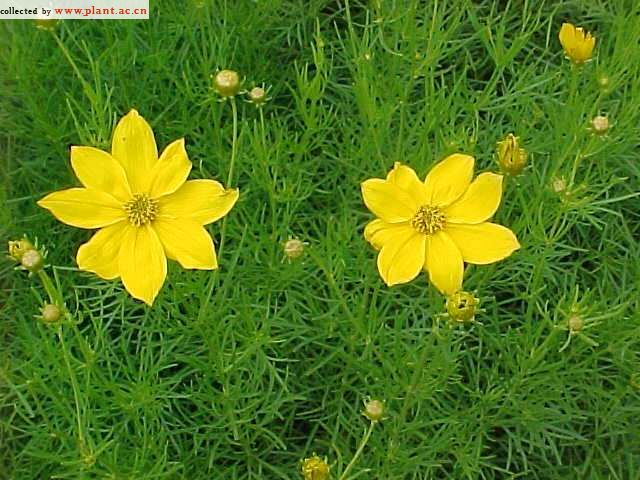Coreopsis verticillata GrandifloraThreadleaf coreopsis
Family:Asteraceae
属:金鸡菊属
common name:Threadleaf coreopsis
introduce:Plant Type: Herbaceous perennial
Family: Asteraceae
Missouri Native: No
Native Range: None
Height: 2 to 3 feet
Spread: 2 to 3 feet
Bloom Time: June - September
Bloom Color: Yellow
Sun: Full sun (only)
Water: Dry to medium moisture
Maintenance: Low
General Culture:
Easily grown in dry to medium wet, well-drained soil in full sun. Thrives in poor, sandy or rocky soils with good drainage. Tolerant of heat, humidity and drought. Prompt deadheading of spent flower stalks can be tedious for a large planting, but does tend to encourage additional bloom. Plants may be sheared in mid to late summer to promote a fall rebloom and to remove any sprawling or unkempt foliage. Grandiflora can spread in the garden by rhizomes and self-seeding, particularly in moist fertile soils.
Noteworthy Characteristics:
Threadleaf coreopsis (also commonly called whorled coreopsis) is a rhizomatous perennial which typically grows in dense, bushy clumps to 1-3 tall. Grandiflora is somewhat more compact (to 2.5 tall) and features bright yellow, daisy-like flowers (1-2" diameter) with untoothed rays and darker yellow center disks. Flowers appear singly in loose clusters (cymes) in a lengthy late spring to late summer bloom period which sometimes extends to first frost. Shearing plants in mid-summer (early August) when bloom usually tapers down will encourage a fall rebloom. Palmately 3-parted leaves with thread-like segments lend a fine-textured and airy appearance to the plant. Plants in the genus Coreopsis are sometimes commonly called tickseed in reference to the resemblance of the seeds to ticks. Grandiflora is synonymous with and commonly sold by nurseries as Golden Showers. A Royal Horticutural Society of Great Britain Award of Garden Merit plant (1993).
Problems:
No serious insect or disease problems. Tends to sprawl, particularly if grown in moist and/or fertile soils. Crown rot may occur if grown in moist, poorly drained soils. Can be somewhat invasive, but generally less so than the species.
Uses:
Borders. Also effective in naturalized areas, native plant gardens or cottage gardens. Good plant for areas with poor, dry soils.
